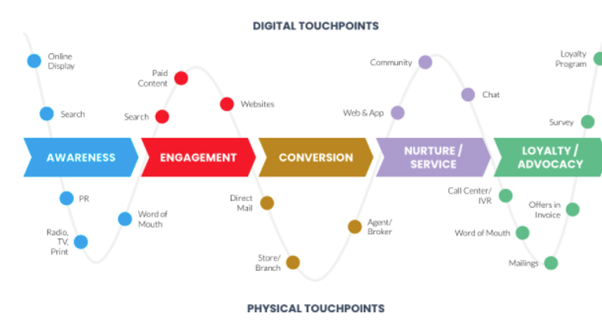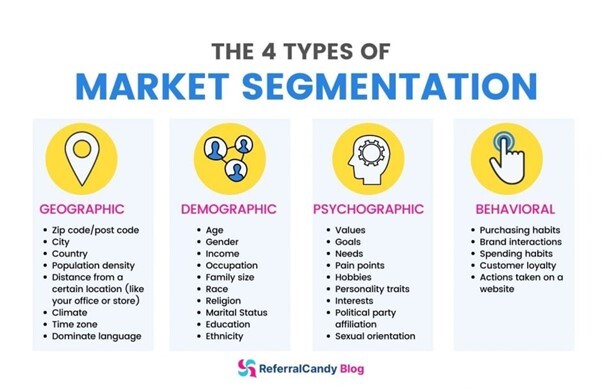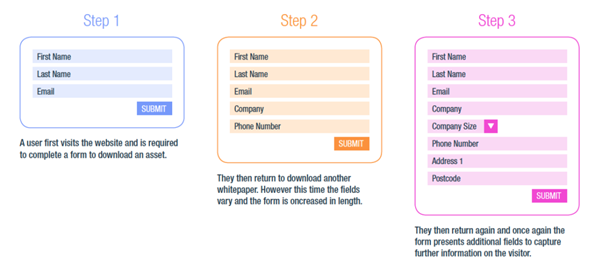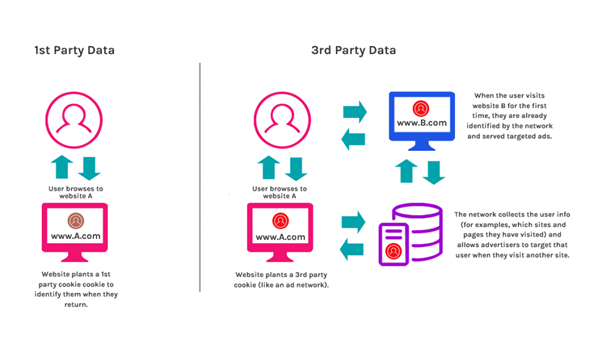First party data is essential for any B2B Account Based Marketing (ABM) strategy. Without it, you’re out of luck in understanding your target audience and providing high-quality leads. Fortunately, the use of first party data strategies can help you build an effective account-based marketing strategy that provides quality leads and increased revenue.
ABM is transforming B2B marketing. More than 90% of B2B marketers believe ABM is a must-have value-added strategy. On the other hand, a Gartner first-party data study found that digital marketing leaders must improve their ability to collect, manage, and deploy first party client data to prepare for increased privacy regulations and the decline of third-party cookies. This clearly shows that the partnership between ABM and first-party data is the ideal formula for staying ahead of competitors.
In this blog post, we will explore the benefits of utilizing first party data strategies and how to make the most of this powerful tool. Read on to learn more about leveraging first-party data to drive a successful ABM approach and up your marketing game.
What is First Party data?
First party data is data that a company collects from its clients and prospects. This data can come from many sources, including website interactions, client surveys, loyalty programs, and contact information from sales and marketing interactions. The first party data is usually more accurate and complete than third party data. Hence the value of first-party data is higher than that of third-party data. This accuracy makes it more valuable for marketing and advertising purposes.

When used with account-based marketing, first party data can be used to create targeted audience lists of accounts and contacts for outreach. It can also segment accounts and customize messages for maximum impact. In addition, first party data can be used to track progress and measure success over time.
Consider incorporating ideas around first-party data collection and usage to improve your ABM strategy. Doing so will enable you to target your accounts better, induce personalization, and track your overall progress.
Importance of First-party data strategies in ABM
First party data strategies are essential for any organization looking to up its account-based marketing game. By leveraging first-party data, you can gain an in-depth understanding of your clients’ journeys and behaviors and tailor your ABM efforts accordingly.
This data can be collected from various sources, including website visits, blog views, and email interactions. With the correct data, you can build highly targeted campaigns that will help you engage and convert your key accounts.
This data can also inform segmentation and personalization efforts, enabling you to send more relevant and tailored messages to your clients.

Implementing first-party data strategies is essential for any organization looking to take its ABM game to the next level.
How is First Party data collected?
There are a few critical ways that first-party data is collected:
1. Website visitor data: This includes IP addresses, page views, time on site, and other similar metrics. This data can be collected through website analytics tools like Google Analytics.
2. Contact form submissions: If you have a contact form on your website, the data submitted (like name, email address, phone number, etc.) is considered first-party data.
3. Purchase history: If you sell products or services online, the data related to those transactions (like what was purchased, when it was purchased, how much was spent, etc.) is first-party transactional data. This transactional data becomes valuable when aligned with the last purchase details, lifetime value, etc.
4. Email subscribers: If someone subscribes to your email list, their contact information (like their email address) is first-party data.
5. Social media followers: If someone follows you on social media, their social media handle (like their Twitter username) is first-party data.
Why is First Party data leading to Progressive Profiling important in ABM?
A company collects first-party data about its clients, prospects, and online visitors. The progressive profiling of clients helps create crystal clear, highly personalized, and targeted marketing campaigns that are more likely to convert into sales.

When it comes to account-based marketing, first-party data is essential for two main reasons:
1. It allows you to create personalized campaigns relevant to each account.
2. It gives you a deeper understanding of your target accounts, so you can identify key decision-makers and influencers, to establish productive communications that resonate with them.
Without first-party data, your ABM campaigns will be less effective and may even miss the mark entirely. So if you have not yet embraced this transformation of using first-party data in your ABM efforts, now is the time to start!
5 First party data strategies to improve ABM
As the account-based marketing landscape continues to evolve, so must the strategies and tactics organizations use to succeed with this approach. One area that is particularly important for ABM's success is first party data.
Organizations can use first party data to improve their ABM efforts in several ways. For example, they can use it to create more targeted and personalized marketing messages, better understand client needs and preferences, and track client engagement with ABM campaigns. Additionally, first party data can be used to create custom audiences for targeted ads on social media and other digital channels.
Regarding first-party data strategies for ABM, there are a few key things to keep in mind. Collecting high-quality first party data is an ongoing process. This data should be accurate and complete, and it should be collected from a variety of sources.
Second, organizations must establish processes and systems for managing and analyzing their first party data. You may implement machine learning and artificial intelligence tools to analyze this first party data repository to build an Ideal client profile.
Finally, they need to ensure that they are using first party data in a way that complies with all applicable laws and regulations.
1. Segment your audience and target them more effectively
Account-based marketing is only as effective as the quality of your data. To target your ideal clients more effectively, you must segment your audience and create targeted lists. Here are a few tips for Segmenting your audience:
1. Define your ideal client profile: Who are your ideal clients? What do they look like? What are their needs and pain points? When you have a clear picture of who you are trying to reach, it will be easier to create targeted lists.
2. Use demographic criteria: Demographics such as industry, company size, job title, and location can be conducive to segmenting your audience.
3. Use firmographic criteria: Firmographic information such as revenue, employee count, and technology stack can help you identify companies that are a good fit for your products or services.
4. Use behavioral criteria: Behavioral information such as website activity, engagement with marketing collateral, and event attendance can help you identify which prospects are actively engaged with your brand.
5. Use Lead Score: Lead scoring is a numerical representation of the relative value of a prospect based on their likelihood to buy from you. Leads with a high score are more likely to be ready to purchase, while those with a low score may need more nurturing before buying.
By segmenting your audience, you can create targeted lists that will enable you to deliver more personalized and relevant content that.
2. Apply Personalization to your messages and content
The most crucial part of any account-based marketing strategy is the ability to personalize your messages and content to your target accounts. This means understanding each account's unique needs and challenges and tailoring your messaging accordingly.
One way to do this is to segment your target accounts by industry, company size, or other relevant criteria. This will allow you to create targeted content that speaks directly to the pain points of your ideal client.
Implementations of account-based marketing software that allows you to customize your messages at the individual level. This ensures that every message you send is relevant and valuable to the recipient.
By taking the time to personalize your messages and content, you’ll be able to build deeper relationships with your target accounts and position yourself as a trusted partner in their success.
3. Create lookalike audiences
There are a lot of data points that enable optimization in a good marketing strategy. Since first party data is the data you collect about your clients, which includes everything from demographics to purchase history to website behavior, it's essential for creating targeted, effective marketing campaigns.
One way to use first party data is to create lookalike audiences. Lookalike audiences are groups of people who share similar characteristics to your existing clients. These audiences can be created on Facebook and other ad platforms using client lists or website tracking pixels.
Creating lookalike audiences allows you to target your marketing efforts more effectively since you know that the people in these audiences will likely be interested in what you offer. And since first party data is so specific, it usually results in higher conversion rates than other types of targeting.
4. Track engagement and conversions
To track the success of your ABM campaigns, you need to measure two key metrics: engagement and conversion. Engagement measures how often your target accounts interact with your brand, while conversion measures how often those interactions result in a sale or other desired outcomes.
There are several ways to track engagement and conversion, but one of the most effective is through first party data. To track engagement, you can use first-party data to measure site time, pages per visit, and bounce rate. You can measure purchase history, newsletter signups, and form submissions to track conversion. By tracking these metrics over time, you can get a clear picture of which ABM campaigns are working and which aren’t.
First-party data is an essential tool for any ABM campaign. By using it to track engagement and conversion, you can ensure that your campaigns are as successful as possible.
5. Improve your ABM strategies over Time
If you're looking to improve your ABM strategies, there are a few things you can do to ensure you're always on the cutting edge. First, keep an eye on changes in the market and how your competitors are adapting their strategies. Second, use data and analytics to constantly refine your understanding of what's working and what isn't. And finally, don't be afraid to experiment with new approaches – sometimes, the best way to learn is through trial and error. By following these steps, you can be sure that your ABM strategies will always be at the top of your game.
Furthermore, you can foster long-term trust and loyalty by understanding and engaging with stakeholders at each stage of their buyer journey.
Benefits of first party data for ABM
First-party data is the best for ABM because it is the most accurate and relevant to your business. It lets you target your ideal clients with laser precision and personalize your marketing messages.
1. Compliant with privacy laws
Your clients' consent is required to collect first-party data. Its use keeps your company in compliance with global data protection laws. First-party data remains in possession of those who collect it. This increases its value and transparency over how the data is used.
2. Offers Uniqueness
First-party data is exclusive, new, and unique data only available to you. Other businesses do not have access to it and cannot obtain it from a third-party source. Because first-party data is unique to your customers, it provides you with detailed information about your buyers. You can figure out what kind of products or services they ultimately want.

3. Offers Reliability
Data from the first party is more accurate than data from the second or third party. The data is either provided or obtained. Additionally, first party data enables you to track progress and results over time to optimize your ABM strategy continuously.
First-party data is a valuable asset to use in your B2B account-based marketing strategy. S2W Media's expert team can assist you in maximizing your business's potential using first party data strategies. Using appropriate tactics and technology to collect data and create more targeted campaigns, you can maximize your ABM efforts.
_MI-Jul-21-2025-12-04-51-8316-PM.jpg?width=1600&height=1000&name=6409c55685ef9f05d787b758_MicrosoftTeams-image%20(128)_MI-Jul-21-2025-12-04-51-8316-PM.jpg)


